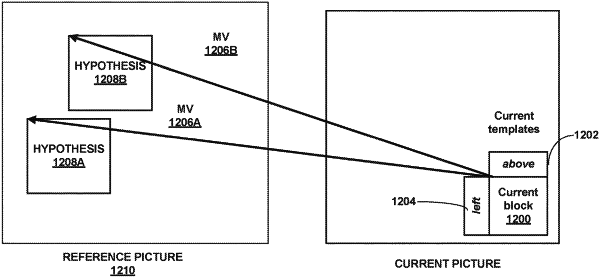| CPC H04N 19/105 (2014.11) [H04N 19/132 (2014.11); H04N 19/137 (2014.11); H04N 19/176 (2014.11)] | 22 Claims |

|
1. A method of decoding video data, the method comprising:
determining a plurality of hypotheses of a current block of the video data based on a plurality of motion vectors, wherein each of the plurality of motion vectors is associated with one of the plurality of hypotheses of the current block, wherein each of the plurality of hypotheses of the current block is based on a set of samples in a reference picture for determining a motion vector for the current block, wherein respective motion vectors associated with respective hypotheses of the current block identify a top-left sample of the set of samples, and wherein each of the plurality of hypotheses has a same shape as the current block;
determining one or more neighboring samples that are proximate to samples of the current block and in the same picture as the current block;
for each of the plurality of hypotheses of the current block, determining respective correlation values between at least one sample of a respective hypothesis of the current block and at least one sample of the one or more neighboring samples;
determining the motion vector for the current block based on the determined respective correlation values; and
reconstructing the current block based on the determined motion vector.
|